CONCEPT OF LOAD
A load or loads may be defined as the combined effect of external forces acting on a body.
CLASSIFICATION OF LOADS:
-
DEAD LOADS:
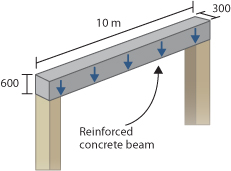 A load whose magnitude remains constant over time is known as dead load(s). For example, weight of the structure such as walls, plaster, ceiling, beam, columns, roof, machine etc.
A load whose magnitude remains constant over time is known as dead load(s). For example, weight of the structure such as walls, plaster, ceiling, beam, columns, roof, machine etc.
-
LIVE or FLUCTUATING LOADS:
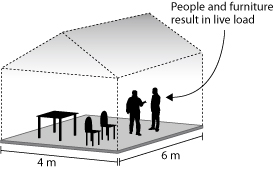 A load whose magnitude changes over time is known as live load(s). For example, load of the vehicles on the bridge, weight of the books on the table etc.
A load whose magnitude changes over time is known as live load(s). For example, load of the vehicles on the bridge, weight of the books on the table etc.
- INERTIA LOADS: It is the resistance of the body to change in direction and speed.
- CENTRIFUGAL LOADS: It is the load which simulates the effect of entire model spinning about an axis you specify. It always acts in the direction opposite to the direction of acceleration.
-
TENSILE LOADS:
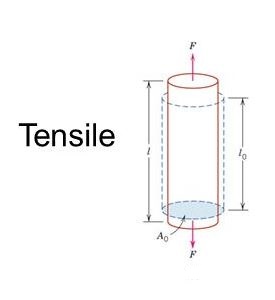 When two equal and opposite PULLS are applied on a body in the same line of action, then it is said to be subjected to tensile load(s). The result of the application of the tensile load is that the length of the body is increased and thickness is reduced.
When two equal and opposite PULLS are applied on a body in the same line of action, then it is said to be subjected to tensile load(s). The result of the application of the tensile load is that the length of the body is increased and thickness is reduced.
-
COMPRESSIVE LOADS:
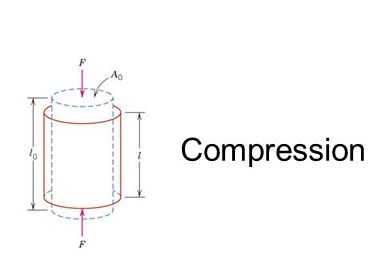 When two equal and opposite PUSHES are applied on a body in the same line of action, then it is said to be subjected to compressive load(s). The result of the application of the compressive load is that the length of the body is decreased and thickness is increased.
When two equal and opposite PUSHES are applied on a body in the same line of action, then it is said to be subjected to compressive load(s). The result of the application of the compressive load is that the length of the body is decreased and thickness is increased.
-
TORSIONAL LOADS:
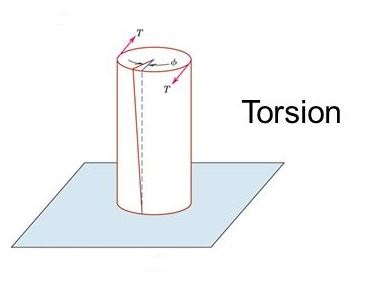 It is the load which imparts the turning moment or the torque to the object.
It is the load which imparts the turning moment or the torque to the object.
-
BENDING LOAD:
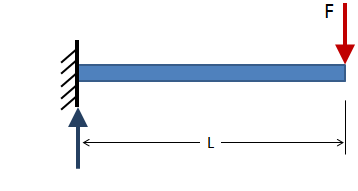 The load which is applied perpendicular to the longitudinal axis of the member and which results in bending of the member is known as bending load.
The load which is applied perpendicular to the longitudinal axis of the member and which results in bending of the member is known as bending load.
-
SHEARING LOADS:
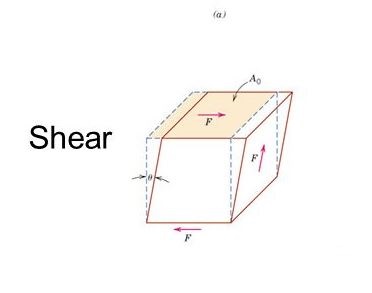
When two equal and opposite load having opposite direction and different line of action acts on a member, then it is said to be subjected to shearing load(s).
-
POINT LOADS:
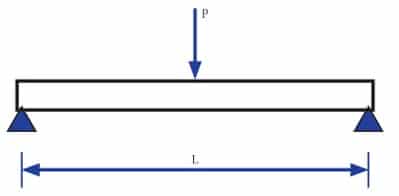 Point load(s) or a concentrated load(s) is one which is considered to act at a point. In actual practice, the load has to be distributed over a small area, because, such small knife edge contacts are generally neither possible nor desirable.
Point load(s) or a concentrated load(s) is one which is considered to act at a point. In actual practice, the load has to be distributed over a small area, because, such small knife edge contacts are generally neither possible nor desirable.
- DISTRIBUTED LOADS: A distributed load is one which is distributed or spread in some manner over the length of the member.
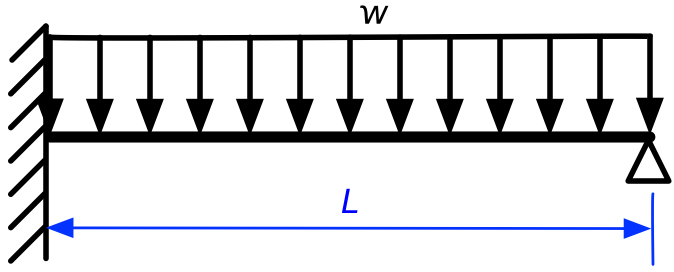 If the spread is uniform, it is said to be uniformly distributed load(s).
If the spread is uniform, it is said to be uniformly distributed load(s).
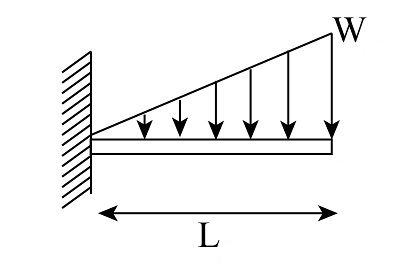 If the spread is not at uniform rate, it is said to be non-uniformly distributed load or uniformly varying load(s). Triangular and Trapezoidal distributed load fall under this category.
If the spread is not at uniform rate, it is said to be non-uniformly distributed load or uniformly varying load(s). Triangular and Trapezoidal distributed load fall under this category.
RELATED VIDEOS:
